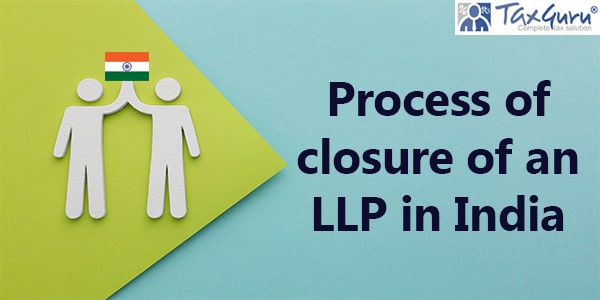The Limited Liability Partnerships (LLPs) have become a popular choice for businesses, offering flexibility and shared liability among partners. However, there may come a time when you need to close your LLP.
Closing a Limited Liability Partnership (LLP) in India can take around 3 to 6 months, depending on the Registrar’s office. Once the application gets the green light, the details will be shared on the Ministry of Corporate Affairs’ website for a month to inform the public. Many people talk about starting LLP companies, but not everyone knows that closing an LLP in India involves a specific procedure. This guide provides a simple and detailed overview of the LLP closure process, covering everything you need to know.
1. Assess the Reason for Closure: Determine the reason for closing the LLP. Common reasons include the completion of a specific project, bankruptcy, lack of profitability, prolonged inactivity, court order, or the partners’ mutual decision to cease business operations.
2. Partners’ Agreement: Check the LLP Agreement to ensure that all partners are in agreement to close the LLP. Unanimous consent is usually required, unless specified otherwise in the agreement.
3. Board Resolution: Hold a meeting and pass a board resolution approving the decision to close the LLP. This resolution should outline the reasons for closure and the proposed steps to be taken.
4. Appointment of Liquidator: If the LLP is solvent, appoint a liquidator. The liquidator is responsible for winding up the affairs of the LLP, realizing its assets, and distributing the proceeds among the creditors and partners.

5. File Form 24 with the Registrar of Companies (RoC): Prepare and submit Form 24 to the RoC. This form includes details of the LLP’s financial position, along with the consent of all partners for closure. It is essential to submit this form within 30 days of passing the resolution to close the LLP.
6. Publish a Notice: Publish a notice of LLP closure in two newspapers, one in English and another in the regional language of the LLP’s registered office. The notice should specify the intent to close the LLP and invite any claims or objections from creditors.
7. Settle Debts and Liabilities: Liquidate the assets, settle debts, and clear any outstanding liabilities of the LLP. This includes paying creditors, employees, and any statutory dues.
8. Obtain No Objection Certificate (NOC): Obtain an NOC from all creditors and partners, confirming that they have no objections to the LLP closure.
9. File Form 8 and Form 11: Submit Form 8 (Statement of Account & Solvency) and Form 11 (Annual Return) with the ROC. These forms should be filed up to the date of closure. Ensure that all annual compliance requirements are met.
10. ROC Approval: Upon submission of the required documents, the ROC will review and, if satisfied, approve the closure. The LLP will be struck off the register, and the closure will be published in the Official Gazette.
11. Distribution of Assets: Once the closure is approved, distribute the remaining assets among the partners as per the LLP Agreement.
Closing an LLP in India involves a combination of legal, financial, and procedural steps. It might seem like a daunting task, but by following these simple steps, you can ensure a smooth and lawful closure. Effective communication among partners, adherence to legal requirements, and a clear plan for settling debts and distributing assets will make the process more manageable. Remember, closing an LLP is a step-by-step process, and with the right approach, you can bring your business to a close with confidence.
*****
If you need further clarification or personalized consultation, our dedicated team is at your disposal. Please feel free to connect with us via email at info@ccoffice.in or by calling us at +91 9988424211.





























this site is very good and more helpful .
Well written.